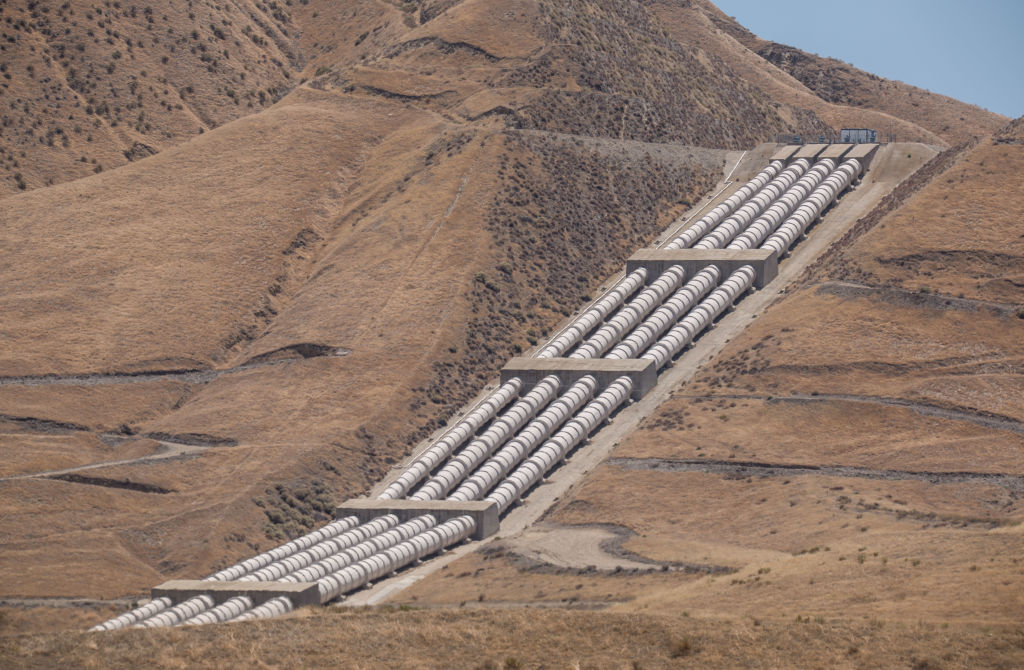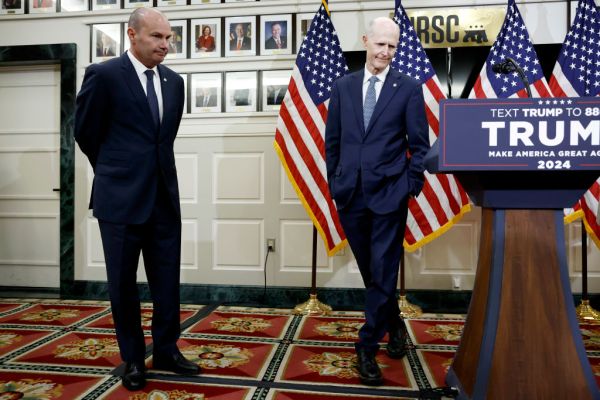Last week’s debt ceiling deal let the U.S. avert an economic crisis. But it also modestly reformed federal permitting laws with an eye toward making it easier for private and public actors alike to build and deploy energy infrastructure.
“What you see is just the lowest-hanging fruit; it’s the least controversial stuff,” Alec Stapp, co-CEO of the Institute for Progress, tells The Dispatch.
The fact that permitting reform made it into the bill at all is the latest example of bipartisan interest in hacking away at the red tape that routinely entangles a wide range of projects, from wind farms to natural gas pipelines.
What permitting problems does the Fiscal Responsibility Act address—and what are the prospects for consensus on more comprehensive reforms?
Environmental protection laws have ‘metastasized.’
Whether local power plants or linear transmission projects like pipelines and power lines, new energy infrastructure often takes years to go from proposal to operational. Environmental protection laws, especially the 1969 National Environmental Policy Act (NEPA), are commonly cited culprits: The documents agencies produce to comply with NEPA prior to even beginning construction often run for hundreds of pages and take years to compile.
It hasn’t always been this way. The law itself, which simply requires that environmental impacts be studied and taken into consideration for “major federal actions,” was “never intended to create a five-, six-, seven-year process,” says James Coleman, an energy law professor and nonresident fellow at the American Enterprise Institute.
But the straightforward environmental reviews of 1970s and ’80s nonetheless “metastasized” into today’s monstrosities, Stapp says.
That’s largely because of judicial review—courts’ ability to declare legislative or executive actions unconstitutional. Since NEPA’s passage, opponents of various infrastructure projects have repeatedly challenged agencies’ environmental impact assessments in circuit courts for not being comprehensive enough. Over time, those challenges have built a body of case law incentivizing agencies and project sponsors (typically the companies hoping to build the infrastructure) to hedge their bets and make their initial environmental reviews even longer.
“Because this is a procedural law that requires agencies to comprehensively consider every possible environmental impact, that means there’s in practice no ceiling on how long these reviews can take and how many pages they need to be,” Stapp says.
Time limits with teeth?
The Fiscal Responsibility Act passed last week includes time limits and page limits, following Trump-era guidance from the Council on Environmental Quality—but those limits have loopholes. For example, the 150-page limit on NEPA environmental impact statements in the legislation doesn’t count appendices. Plus, even well-enforced time and page limits wouldn’t automatically prevent innovative opponents from finding new ways to delay projects.
That’s why Stapp and Coleman advocate putting time limits on judicial injunctions as well, preserving “a reasonable timeframe for valid objections to be raised and addressed in court” while discouraging “obstructionist litigation,” according to an Institute for Progress policy brief.
Congress has already demonstrated a willingness to scuttle judicial review when it really wants to—thanks to the debt ceiling deal, Sen. Joe Manchin’s prized Mountain Valley Pipeline is now virtually exempt from most potential court challenges. With precedent like that, putting a “shot clock” on injunctions or otherwise streamlining the judicial process could be cast as a compromise position.
Clean energy transmission is at a disadvantage.
NEPA is the main “binding constraint” on the approval of new power plants, whether they get their energy from fossil fuels or renewable sources, Stapp says. But for developers who want to transmit the resulting supply of electricity to where it’s most in demand, “there are other even bigger problems.”
One of those problems is that the rules governing the geographical placement or “siting” of power lines differ from those governing natural gas pipelines. Interstate natural gas pipelines have been federally regulated since the Natural Gas Act of 1938, with the Federal Energy Regulatory Commission (FERC) authorizing their siting, permitting, and cost allocation (though states have limited veto power). Putting interstate electricity transmission lines on equal footing could make it easier to buy and sell electricity over longer distances, which could bring renewable energy into bigger markets.
“In an ideal world, you’d have something like solar power being generated all across the Southwest, and it’s moved to New York when there’s peak energy demand in the Northeast,” Stapp says.
The Fiscal Responsibility Act commissioned a study on interregional transmission but otherwise left this policy area untouched.
A ‘pipes for wires’ trade?
Congressional Republicans are generally more eager than Democrats to change environmental laws and more wary of interregional electricity transmission. Washington GOP Rep. Cathy McMorris Rodgers, for example, has said a permitting reform bill Manchin introduced last year “would inevitably lead to some states having to shoulder the costs for transmission lines to elite coastal cities, with no actual benefit to their own states.”
To get an agreement through a divided Congress, both parties will have to accommodate some version of their opponents’ priorities, with Democrats agreeing to reform NEPA and perhaps even other environmental legislation and Republicans agreeing to give FERC authority over transmission lines. A “pipes for wires” trade like this could boost some fossil fuel projects on the margins—but on net, it would accelerate the clean energy transition.
New clean energy projects are “much more dependent on permitting” because they are more dependent than fossil fuels on pipelines and power lines, Coleman says.
“If we’re going to make this transition to cleaner energy sources, it’s going to be because we built a huge amount of new linear infrastructure,” he says. “And that’s what creates this huge permitting challenge.”









Please note that we at The Dispatch hold ourselves, our work, and our commenters to a higher standard than other places on the internet. We welcome comments that foster genuine debate or discussion—including comments critical of us or our work—but responses that include ad hominem attacks on fellow Dispatch members or are intended to stoke fear and anger may be moderated.